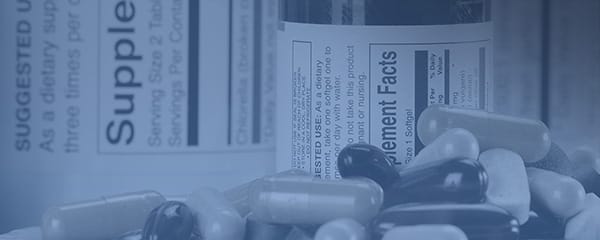Product Classification Matters
I always chuckle when I read the title of FDA guidance, “Is it a Cosmetic, a drug, or both? (Or is it a Soap?)”. However, the correct classification of a product is no laughing matter—it is essential to ensuring compliance with the right set of FDA regulations. An important basic concept is provided by the “Is it a cosmetic…” guidance: The regulatory classification of a product depends on both its ingredients and the intended use as determined by labeling and marketing materials.
What about dietary supplements?
The same concept applies to determining whether a product is a dietary supplement or a drug. The ingredients must fit the definition of dietary ingredients that includes:
- vitamins and minerals;
- herbs and other botanicals;
- amino acids;
- “dietary substances” that are part of the food supply, such as enzymes and live microbials (commonly referred to as “probiotics”); and
- concentrates, metabolites, constituents, extracts, or combinations of any dietary ingredient from the preceding categories.
It is important to understand that a dietary supplement product that contains only dietary ingredients included in the list above can be classified as a drug if the product bears claims that are therapeutic in nature. Therapeutic products are intended to diagnose, treat, cure, or prevent disease. Proper dietary supplement claims are called ‘structure function claims’ and inform the consumers regarding the effect of the product on the normal, healthy structure or the normal, healthy function of the body and its systems. By the way, the same goes for claims on food products.
FDA Enforcement Actions
FDA has published scores, perhaps hundreds, of warning letters highlighting claims that stray from “structure function” into the therapeutic realm. A recently published warning letter provides a look at another way to cause a dietary supplement to be classified as a drug. In this case, a dietary supplement company conducted a clinical trial on one of their products. FDA inspectors became aware of the study and upon inspection determined that the clinical study included disease endpoints. Although crucial details are redacted from the warning letter, and replaced with (b)(4), it is clear that the study used a questionnaire that asked about symptoms. As stated in the Warning Letter:
- “Although Protocol (b)(4) identified the ”efficacy endpoint” as an assessment of tolerability of (b)(4) in subjects with (b)(4), the “primary outcome measures” for Protocol (b)(4) included differences in baseline and post-intervention scores on various questionnaires that are used to assess symptoms of (b)(4), including changes in bowel movement frequency and quality, in subjects with (b)(4). Therefore, Protocol (b)(4) collected study data to assess the effect of (b)(4) on (b)(4), as measured by (b)(4).
Whether an investigational article is a drug or a dietary supplement depends on the intent of the investigation. [emphasis added] Based on the study designs of Protocols (b)(4) and (b)(4), the investigational product, (b)(4), as used in these clinical investigations, was a drug as defined in section 201(g)(1) of the FD&C Act because (b)(4) was studied for use in the treatment of (b)(4) and for use [in] the treatment of (b)(4), respectively.”
What’s the key takeaway? Don’t turn your successful dietary supplement into a drug by making or implying that it will have therapeutic effects AND be careful when you design any studies on your product to ensure that the protocol does not demonstrate an intended use as a drug.
Confused about whether your claims may inadvertently classify your dietary supplement, food, or cosmetic as drug? Contact us for help!




